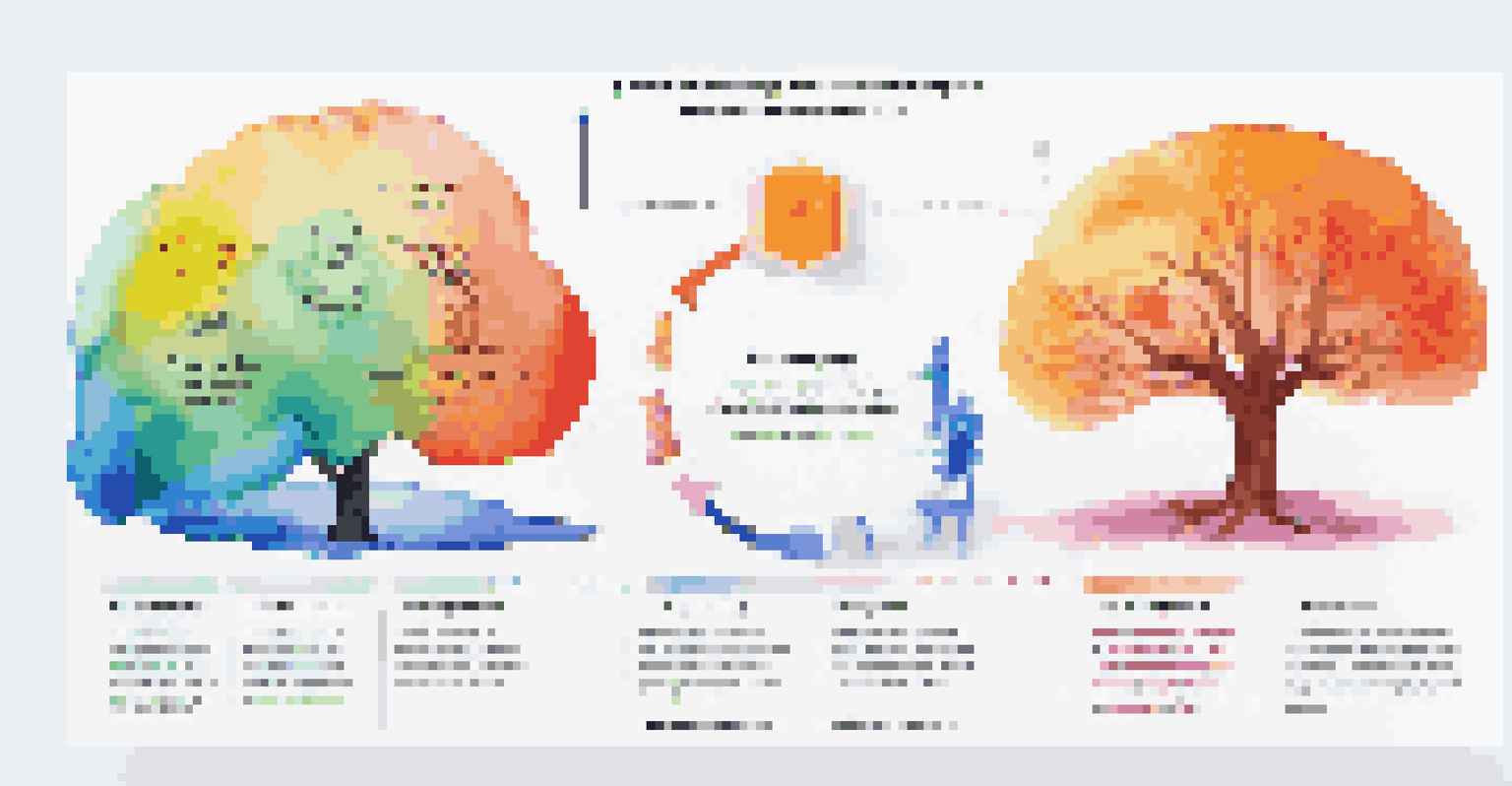Cognitive Load Theory: Understanding Its Role in Skill Mastery

What is Cognitive Load Theory and Why It Matters
Cognitive Load Theory (CLT) is an educational framework that helps us understand how our brains process information. At its core, it suggests that our working memory has limited capacity, which impacts how we learn and master new skills. Recognizing this limitation can guide educators and learners alike in structuring learning experiences more effectively.
The mind is not a vessel to be filled, but a fire to be kindled.
Imagine trying to juggle three balls while simultaneously solving a math problem in your head. This scenario illustrates cognitive overload, where too much information can hinder our ability to perform tasks. By understanding CLT, we can design learning environments that reduce unnecessary cognitive load, allowing for better retention and skill mastery.
Ultimately, CLT emphasizes the importance of balancing challenge and support in the learning process. With the right approach, we can enhance our ability to absorb and apply new knowledge, making skill mastery a more achievable goal.
The Three Types of Cognitive Load Explained
Cognitive load can be categorized into three types: intrinsic, extraneous, and germane. Intrinsic load relates to the complexity of the content itself, which varies by individual based on prior knowledge. For example, learning to play the piano will be easier for someone with a musical background than for a complete novice.

Extraneous load, on the other hand, refers to any unnecessary distractions or complications that can impede learning. This could include poorly designed instructional materials or irrelevant information that doesn't contribute to understanding the skill at hand. Minimizing extraneous load is crucial for creating a focused learning environment.
Understand Cognitive Load Types
Recognizing intrinsic, extraneous, and germane load helps tailor learning experiences for better skill mastery.
Lastly, germane load is the mental effort used to process and understand new information, which is essential for skill development. By fostering germane load, we can encourage learners to engage deeply with the material, leading to better retention and application of skills in different contexts.
How to Reduce Extraneous Load in Learning Environments
Reducing extraneous load is an essential step in effective learning. One way to achieve this is by simplifying instructional materials, such as using clear visuals and concise text to convey information. For instance, instead of a lengthy lecture, a well-designed infographic can present key concepts more efficiently.
Learning is not the product of teaching. Learning is the product of the activity of learners.
Another strategy is to eliminate distractions in the learning environment. This could mean ensuring a quiet space for study or using technology mindfully, like turning off notifications during practice sessions. By creating a distraction-free zone, learners can focus better on mastering their skills.
Moreover, it's important to provide structured guidance, such as step-by-step instructions or scaffolding techniques, to help learners navigate complex tasks. This support can significantly reduce cognitive overload, making the learning process smoother and more effective.
The Role of Intrinsic Load in Skill Complexity
Intrinsic load is inherent to the task itself and often varies from person to person. For example, mastering a new language involves different levels of intrinsic load depending on the learner's familiarity with similar languages. Understanding this aspect helps educators tailor their approach to meet individual needs.
To manage intrinsic load, it's beneficial to break down complex skills into smaller, more digestible parts. Consider learning to ride a bike: first, a learner might focus on balancing, then pedaling, before combining both skills. This incremental approach can effectively reduce cognitive strain and promote confident skill acquisition.
Reduce Extraneous Load Effectively
Simplifying materials and minimizing distractions can create a focused learning environment that promotes retention.
By acknowledging intrinsic load, we can better prepare learners for the challenges they face. This awareness allows for creating targeted learning objectives that align with each learner's capabilities, ultimately leading to more efficient skill mastery.
Germane Load: The Key to Deep Learning
Germane load is the cognitive effort dedicated to understanding and internalizing new information, which is crucial for skill mastery. When learners actively engage with material — like discussing concepts with peers or applying knowledge in real-life scenarios — they are enhancing germane load. This engagement is what transforms surface learning into deeper understanding.
To promote germane load, incorporate interactive activities that encourage learners to think critically about what they are learning. For example, group projects or hands-on workshops can facilitate deeper connections to the material and foster collaborative skill development.
Additionally, encouraging self-reflection can enhance germane load. When learners take time to evaluate their progress and identify areas for improvement, they are actively participating in their learning journey. This reflective practice can lead to better mastery of skills over time.
Practical Applications of Cognitive Load Theory
Cognitive Load Theory has practical applications across various fields, from education to professional training. In classrooms, teachers can design lessons that minimize extraneous load and enhance germane load, such as using multimedia presentations that engage multiple senses. This approach can lead to more effective learning outcomes.
In workplaces, training programs can benefit from CLT by structuring content in a way that builds on existing knowledge while minimizing cognitive overload. For instance, using simulations and role-playing can provide employees with hands-on experience without overwhelming them with too much information at once.
Promote Germane Load for Deep Learning
Encouraging active engagement and self-reflection enhances understanding and mastery of new skills.
Moreover, online learning platforms can leverage CLT by offering adaptive learning paths that adjust to individual progress. This personalized approach ensures learners are neither bored with repetitive content nor overwhelmed by challenging material, leading to a more satisfying skill mastery experience.
Conclusion: Embracing Cognitive Load Theory for Mastery
Cognitive Load Theory offers valuable insights into how we learn and master new skills. By understanding the different types of cognitive load, we can design learning experiences that are both effective and engaging. This approach not only helps learners grasp complex concepts but also fosters a deeper connection to the material.
Embracing CLT allows educators, trainers, and learners to create supportive environments that facilitate skill mastery. By reducing extraneous load, managing intrinsic load, and promoting germane load, we can optimize the learning process for everyone involved.

Ultimately, the key takeaway is that mastering a skill is not just about hard work; it's also about smart work. By applying the principles of Cognitive Load Theory, we can make the journey to skill mastery a more enjoyable and successful experience.